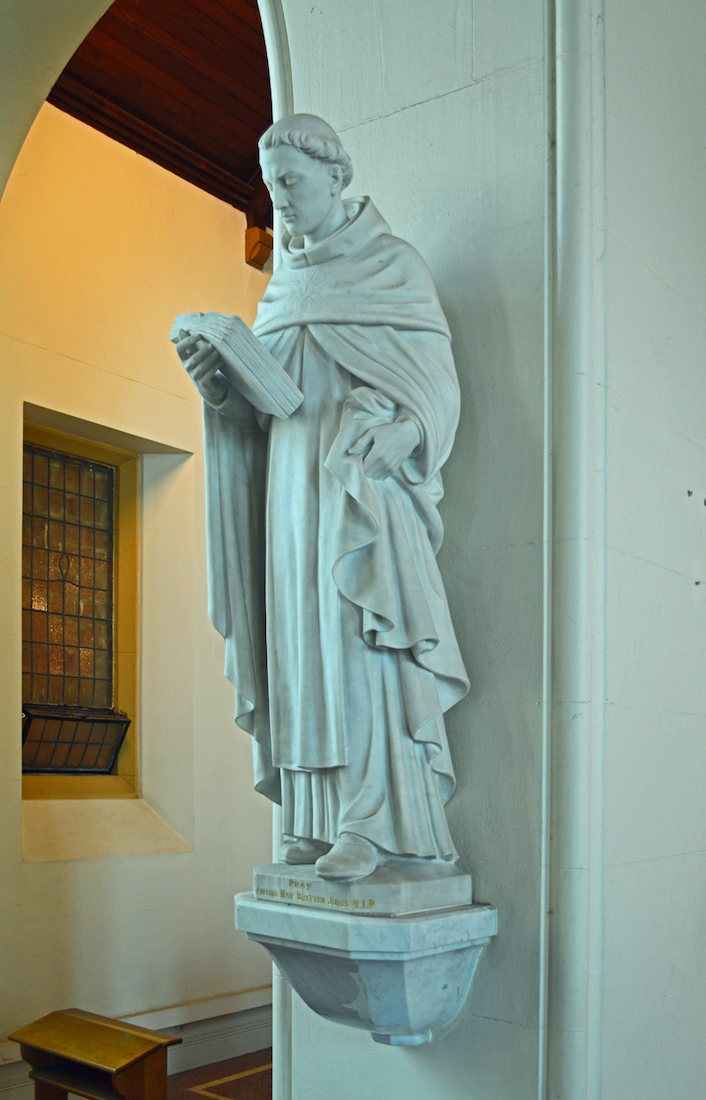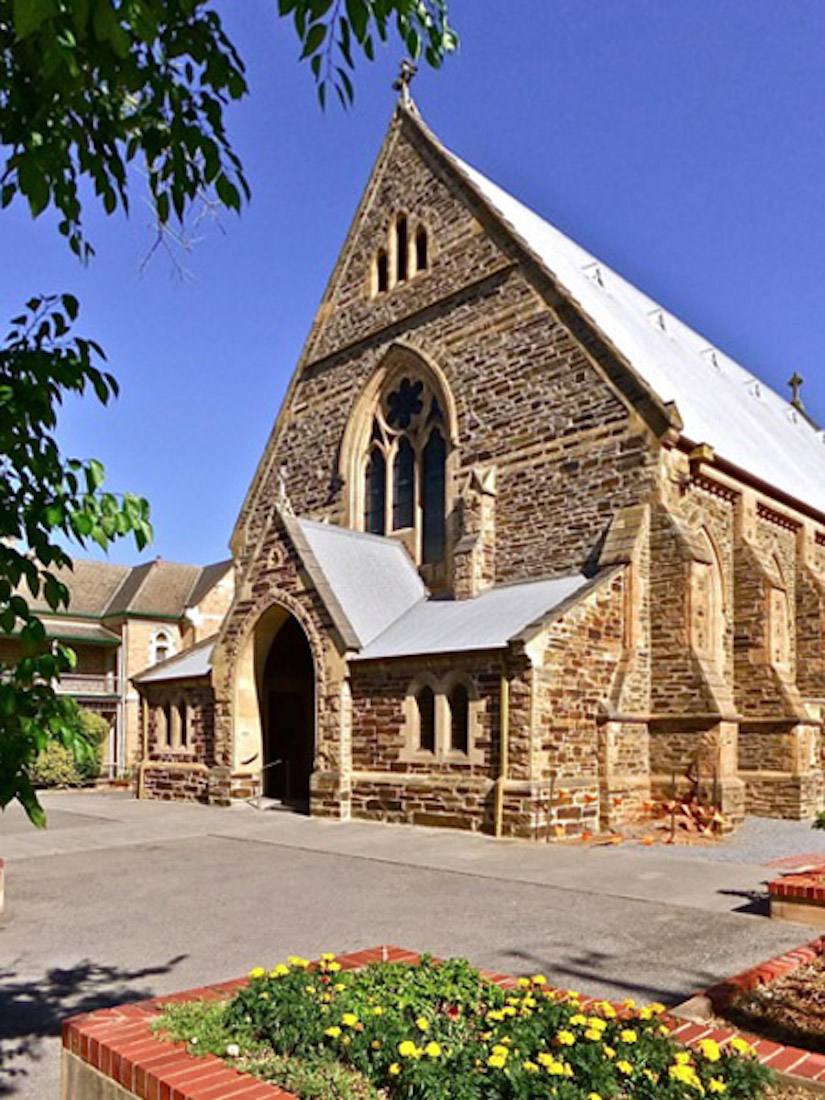A brief history of this Church is given below. However, if you want to begin your tour of the Church immediately, tap / click on START . You can also access intermediate points in the tour by a tap / click on the following links:

HISTORY
Year Built: 1867
Address: 134 Buxton Street, North Adelaide SA 5006
St Laurence’s was already a parish when the first Dominican friars arrived in 1898.
The building was designed by Wright Woods and Hamilton, and the builder was Michael McMullen. The foundation stone was laid on March 1867, by Bishop Shiel. Only the nave of the present structure was built at that time. It was dedicated on 10 January 1869, again by Bishop Shiel.
The porch, sanctuary, confessionals and side altars were later additions, from 1909. The additions were designed by Edward John Woods, and built by Ligertwood and Park.
The church was finally consecrated in December 1949, by Archbishop Beovich. The relics in the altar are of St Dominic, and also the martyrs Auctus and Verecundus (of the latter, little is known).
The first Dominican parish priest, Fr Robert Spence OP, was later Archbishop of Adelaide.
The parish originally extended from the River Torrens in the south, to Junction Rd in the north; and from King William Rd and Main North Rd westward to the coast. In this large area there were estimated to be 700 – 800 Catholics at that time.
The windows and statues in St Laurence’s are a special feature. A statue of Jesus in a shrine on the left of the sanctuary shows him proclaiming his sacred name. This recalls that the first Holy Name Society in Australia was convened at St Laurence’s church in 1922. The details are set out on a plaque in the porch by the main entrance of the church.
Other statues and windows honour not only St Laurence, but also Dominican saints.
In alcoves in the nave are statues of St Laurence, the third century deacon and martyr, who is the eponymous patron of this church, who is shown holding a gridiron, the instrument of his martyrdom. Opposite is a statue of St Martin de Porres, one of the three Dominican saints of Lima, Peru. He is shown contemplating the crucifix which he holds in one hand, and holding a broom in the other – indicating his devotion to the cross, and the manual labour indicating his role in the priory as porter.
The windows behind the high altar show, from left to right, St Catherine de Ricci, St Thomas Aquinas, St Dominic, St Catherine of Siena, St Vincent Ferrer and St Rose of Lima. These are all Dominican saints. The statues on this altar are of St Dominic, on the left, and St Laurence, on the right.
The statuary group in a shrine on the right of the altar shows Mary and the infant Jesus giving the Rosary to St Dominic and St Catherine of Siena. Dominicans have from the earliest times used the Rosary for preaching. The legend is that the rosary was given to St Dominic, but in fact the rosary in some form existed before him, and developed in various ways after him. Before the shrine is a candelabra where you are welcome to light votive candles.
There are two other statues at the front of the church outside the sanctuary: St Joseph, on the right, and St Thomas Aquinas on the left.
A window in the nave has another image of Mary and the infant Jesus giving the Rosary to St Dominic.
A plaque in the porch gives some details of the foundation of the church, and another telling of the foundation of the inaugural branch of the Holy Name Society in Australia from this church.
There are also two brass plaques remembering two parishioners, one of whom was killed in World War I, the other accidentally killed in a flying accident. These are in the vestibules on either side of the main entrance.
There is another statue to Our Lady in a wooden shrine on the floor at the back of the church, and on the back wall a picture of St Mary of the Cross MacKillop (marked ‘blessed’ as she was then.)
In the gallery is a pipe organ, used at 11am Mass most Sundays.



